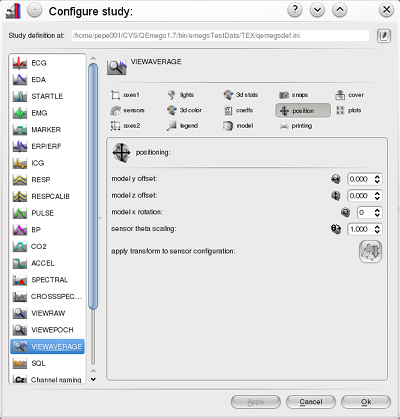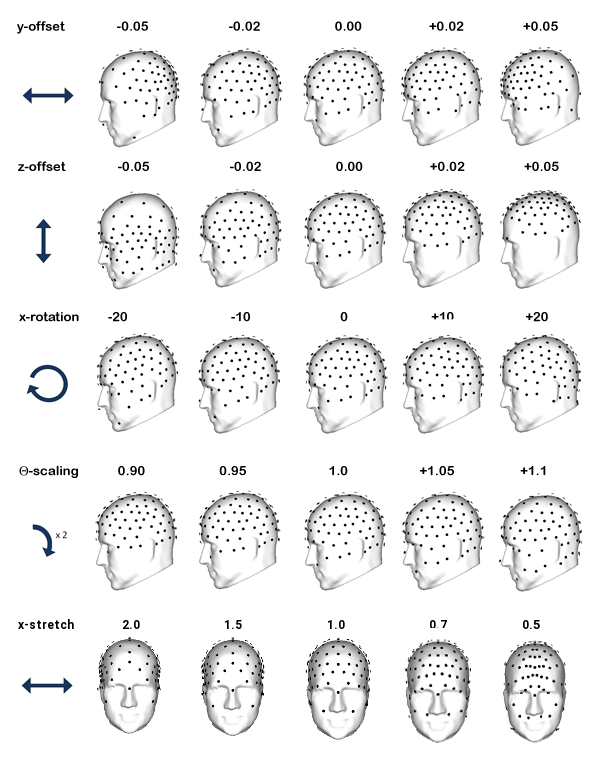

Positioning sensors correctly relative to the render model allows
you to adjust the mapping of the signal on the surface. There are
five
types of adjustments: an "y-offset" which acts in along the
anterior-posterior dimension, a "z-offset" which operates along
the
"inferior-superior" dimension, an "x-rotation" along the
left-right
dimension, a "theta-scaling" which is similar to the z-offset but
keeps theta angle proportions constant and the x-stretch, which
can compensate for the flat sides of the realistic head model as
compared to the sphere mode which is used for spherical spline
interpolation . These transformation are
configured on the "positioning" page
in
the VIEWAVERAGE section
of
the configure-study dialog.
Similar
controls are available in the mapper context menu.

The effects of the transformations are illustrated below:

Y-Offset and Z-Offset transformations are spherical projections
on a
translated model as shown in the following graph, sensor distances
are
not proportionally transformed.
